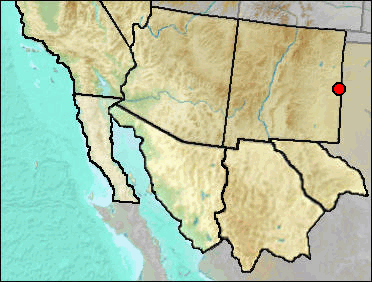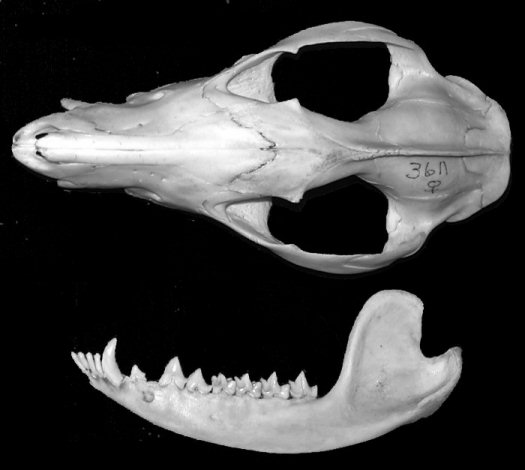Class Mammalia
Order Didelphimorphia
Family Didelphidae

This marsupial is native from southeastern Canada south through central and eastern United States to northern Costa Rica in Central America. The western United States apparently is not in the native range, but human introductions have allowed isolated populations to survive west to California. Several presumably introduced populations have been noted in New Mexico and Trans-Pecos Texas.
 The sole fossil specimen from New Mexico was
identified by Slaughter (1975) from the Blackwater Draw Fauna (Brown Sand Wedge) in the
extreme eastern portion of the state on the basis of a single M1. There is little
chance of misidentification since opossum teeth are distinctive. As appears to be the
case for several other taxa from the Brown Sand Wedge local fauna (e.g., Dasypus
bellus, Procyon lotor), this likely records the opossum moving westward up
drainages from the east. Presumably these drainages supported riparian gallery
forests.
The sole fossil specimen from New Mexico was
identified by Slaughter (1975) from the Blackwater Draw Fauna (Brown Sand Wedge) in the
extreme eastern portion of the state on the basis of a single M1. There is little
chance of misidentification since opossum teeth are distinctive. As appears to be the
case for several other taxa from the Brown Sand Wedge local fauna (e.g., Dasypus
bellus, Procyon lotor), this likely records the opossum moving westward up
drainages from the east. Presumably these drainages supported riparian gallery
forests.
Fig. 1 gives an idea as to how different Didelphis is compared to other regional mammals. The left dentary shown displays four lower incisors, a canine, three premolars, and four molars. The maximum number and arrangement of teeth in our placental mammals for the same element is three incisors, one canine, four premolars, and three molars.
Fig. 1. Skull and lower jaw of Didelphis virginiana. UTEP Mammal Collection.
Sites.
Late Wisconsin: Blackwater Loc. No. 1 (Slaughter 1975).
Literature. Slaughter 1975.
Last Update: 21 June 2008